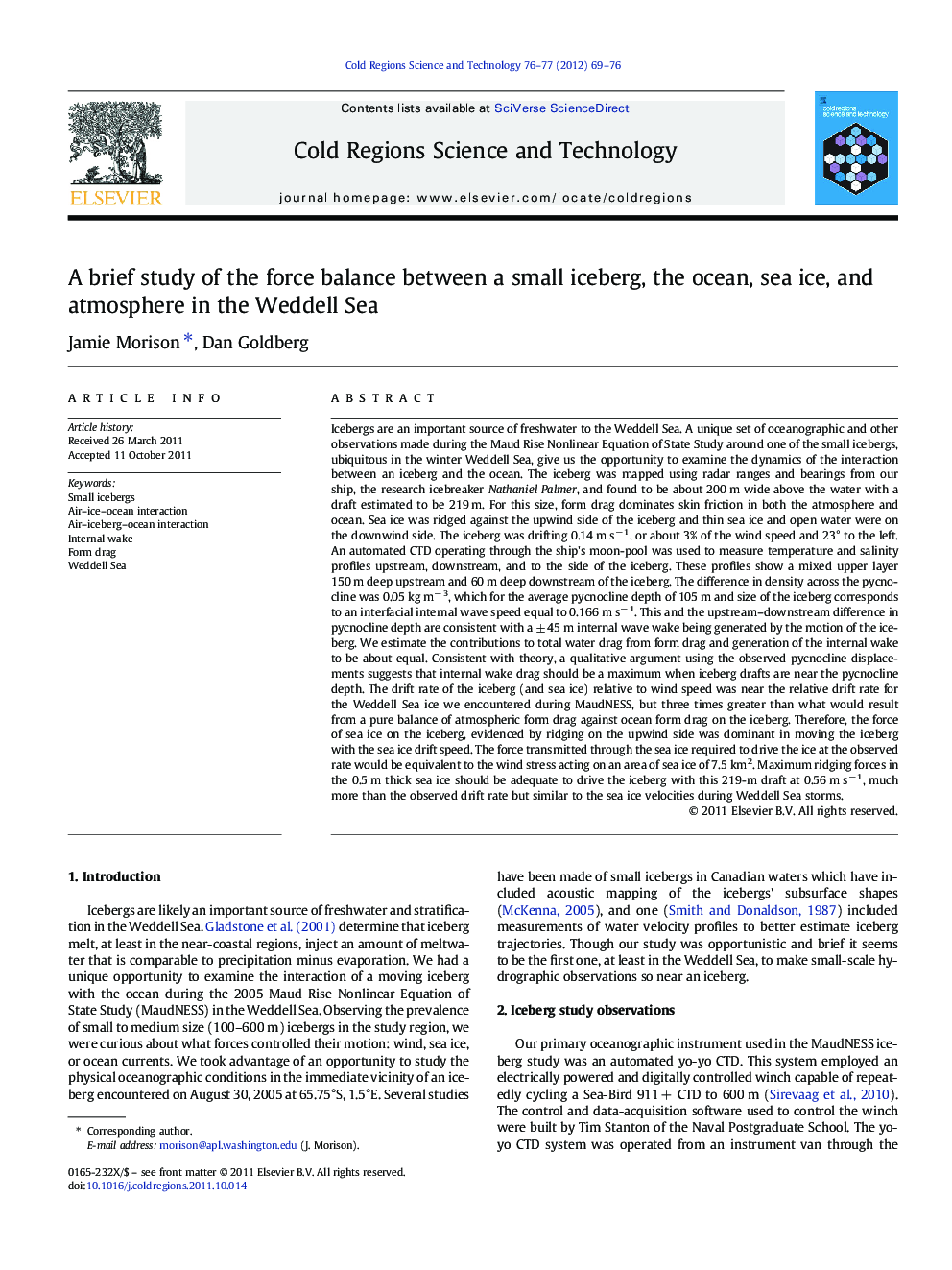| کد مقاله | کد نشریه | سال انتشار | مقاله انگلیسی | نسخه تمام متن |
|---|---|---|---|---|
| 4675974 | 1634482 | 2012 | 8 صفحه PDF | دانلود رایگان |

Icebergs are an important source of freshwater to the Weddell Sea. A unique set of oceanographic and other observations made during the Maud Rise Nonlinear Equation of State Study around one of the small icebergs, ubiquitous in the winter Weddell Sea, give us the opportunity to examine the dynamics of the interaction between an iceberg and the ocean. The iceberg was mapped using radar ranges and bearings from our ship, the research icebreaker Nathaniel Palmer, and found to be about 200 m wide above the water with a draft estimated to be 219 m. For this size, form drag dominates skin friction in both the atmosphere and ocean. Sea ice was ridged against the upwind side of the iceberg and thin sea ice and open water were on the downwind side. The iceberg was drifting 0.14 m s− 1, or about 3% of the wind speed and 23° to the left. An automated CTD operating through the ship's moon-pool was used to measure temperature and salinity profiles upstream, downstream, and to the side of the iceberg. These profiles show a mixed upper layer 150 m deep upstream and 60 m deep downstream of the iceberg. The difference in density across the pycnocline was 0.05 kg m− 3, which for the average pycnocline depth of 105 m and size of the iceberg corresponds to an interfacial internal wave speed equal to 0.166 m s− 1. This and the upstream–downstream difference in pycnocline depth are consistent with a ± 45 m internal wave wake being generated by the motion of the iceberg. We estimate the contributions to total water drag from form drag and generation of the internal wake to be about equal. Consistent with theory, a qualitative argument using the observed pycnocline displacements suggests that internal wake drag should be a maximum when iceberg drafts are near the pycnocline depth. The drift rate of the iceberg (and sea ice) relative to wind speed was near the relative drift rate for the Weddell Sea ice we encountered during MaudNESS, but three times greater than what would result from a pure balance of atmospheric form drag against ocean form drag on the iceberg. Therefore, the force of sea ice on the iceberg, evidenced by ridging on the upwind side was dominant in moving the iceberg with the sea ice drift speed. The force transmitted through the sea ice required to drive the ice at the observed rate would be equivalent to the wind stress acting on an area of sea ice of 7.5 km2. Maximum ridging forces in the 0.5 m thick sea ice should be adequate to drive the iceberg with this 219-m draft at 0.56 m s− 1, much more than the observed drift rate but similar to the sea ice velocities during Weddell Sea storms.
► We interpret unique hydrographic observation made near a small moving iceberg.
► The iceberg velocity nearly equaled the relevant deep-water interfacial wave speed.
► Observations reveal a 45 m amplitude internal wave wake.
► The internal wake and form drag contribute roughly equal amounts to total drag.
► The dominant internal wake drag is above the pycnocline.
► The primary force balance is stress from the sea ice against ocean drag.
► The internal wake may be responsible for mixing across the pycnocline.
Journal: Cold Regions Science and Technology - Volumes 76–77, June 2012, Pages 69–76